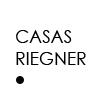Carlos Alfonso: Shapes of Visions that Fly at Night
“Shapes of Visions That Fly at Night” is a journey through real and altered geographies, a passage across deserts, mountains, and botanical gardens where stories intertwine with biology, superstition, and dreams. The short film constructs a shifting territory in which family memory, knowledge of medicinal plants, and inexplicable phenomena coexist without hierarchy, inviting viewers into a universe where the visible and the invisible blur together.
The narration begins with the memory of a father and the seeds he left behind as a legacy, serving as an entryway into a constellation of stories that expand the boundary between science and myth. Here, botany is no longer only a taxonomical record but transforms into a spiritual language that articulates connections between species, bodies, and perceptions. Millipedes, bioluminescent fungi, crops that develop autonomy, and plants that inherit healing powers suggest a world where living matter is traversed by energies, histories, and possibilities that exceed rational explanation.
The horse, a recurring figure in the film, appears as a kind of mediator between dimensions. At times it emerges as metaphor; at others, as a domesticated being reflecting human desires or unconscious projections. In this bond between human and animal, the film marks a territory where perception is prone to overflow, where the limits between vision, hallucination, and revelation dissolve.
Testimonies and references move across cultures, times, and knowledge systems. The deliberate blending of voices creates a narrative fabric that does not aim to assert absolute truths, but rather to show how humans have interpreted and manipulated the natural world through beliefs, classifications, and desires. By gathering these materials on a single plane, the film questions the validity of boundaries between the rational and the speculative, demonstrating how both realms coexist in the construction of our visions.
The work also suggests that perception is deeply shaped by matter. Chemicals, toxins, and proteins alter the senses, transform bodies, and produce images capable of reshaping one’s experience of the world. The visions experienced by the characters, such as luminescent horses, objects inserted into bodies, and distorted figures, emerge as manifestations of a biology that affects thought, emotion, and imagination. In this logic, seeing is not a neutral act but a process conditioned by visible and invisible forces operating simultaneously upon the body.
The film proposes that the accumulation of visions, their migration along the spine, their imprinting on organs, and their transfer to objects, is part of a broader history of how societies attempt to make sense of the unspeakable. Its images act as archaeological remnants of dreams, an archive of knowledge and delirium, fragments of cosmogonies that have been displaced, replicated, or distorted over time. The work invites reflection on the fragility of knowledge and on how human narratives are capable of transforming perception, whether to clarify it or sink it into darkness.
At the intersection of memory, biology, and myth, the film proposes a territory where nature acquires spiritual dimensions, where bodies become repositories of stories, and where the night, understood as a space of uncertainty, opens as a threshold to other modes of seeing. “Shapes of Visions That Fly at Night” does not attempt to resolve the mystery of what appears in the shadows but rather accompanies viewers as they pass through it, reminding us that the visions surrounding us, such as the plants that grow, the animals that watch, or the stories we inherit, have the power not only to transform what we see but to change the very way we understand the world.


